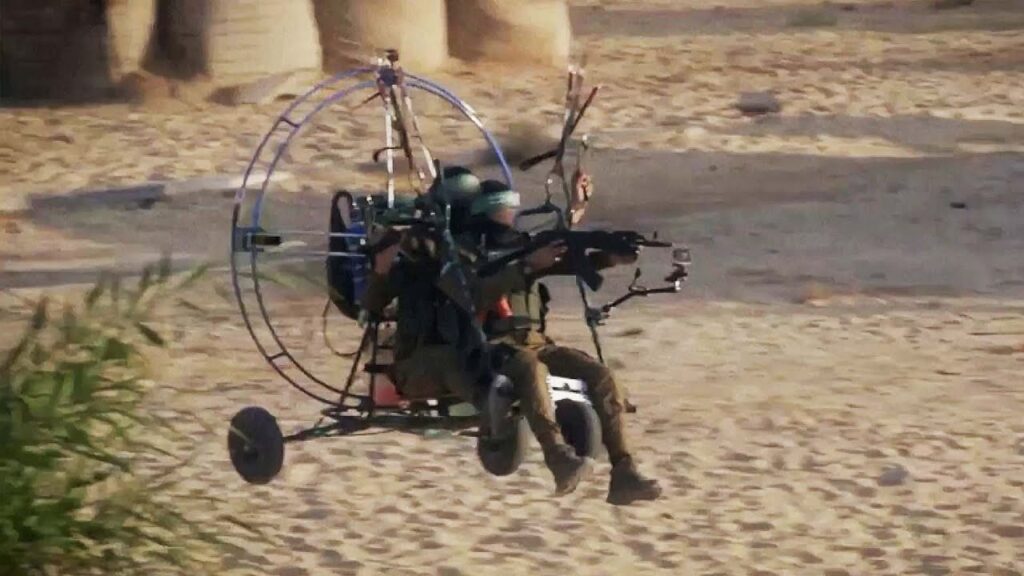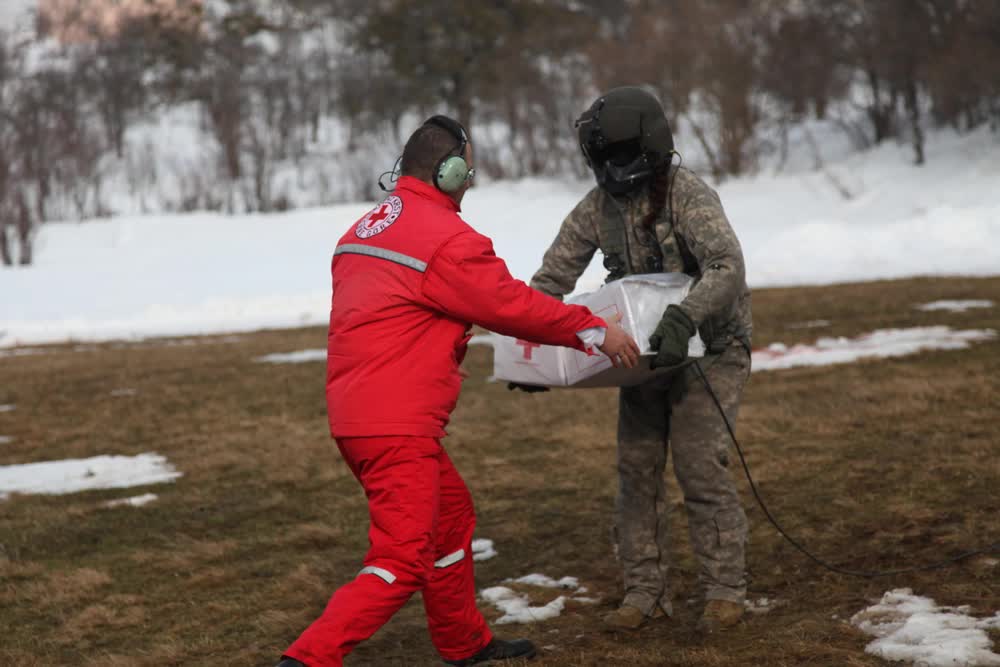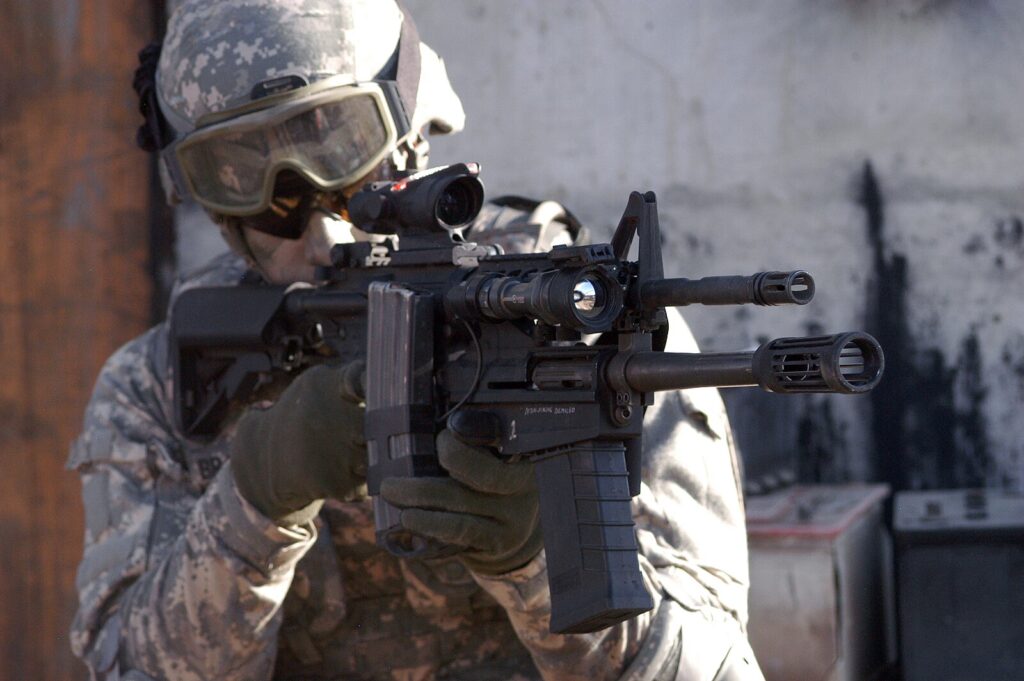Could paramotors be useful to the US military?
- By Travis Pike
Share This Article

During a simulated drone hunt, MARSOC Marines recently glided into Tampa with paramotors strapped to their backs.
A paramotor is essentially a two-stroke engine attached to a propeller with a parachute that allows it to maintain lift. Paramotors are used as hobby aircraft in the United States, and due to their very simple and user-friendly design, a pilot’s license isn’t required to operate them.
MARSOC fielding paramotors isn’t the first time these vehicles have been used by the military. Numerous Army Special Forces Soldiers have trained and experimented with paramotors and classes on the vehicle have been taught to the military for about a decade. Further, in 2020, the Navy sent out a Request for Proposals for paramotors to support ship-to-shore Marine Corps operations.
Foreign militaries have also used them. Egypt uses paramotors, as does Israel and Russia; Serbia is considering them for special operations. North Korea has been observed fielding devices similar to paramotors, and in the October 2024 terrorist attacks, Hamas also used paramotors.
The paramotor advantage
Paramotors have several advantages. They are cheap costing on average $15,000 per unit. They are also small able to be carried in a backpack and could seemingly be strapped to a wheeled vehicle with ease. Due to their size, they also don’t require a hangar for storage.
Compared to other aircraft, paramotors can be covert. They can fly low and slow, and their small size makes them somewhat stealthy, so they aren’t going to show up on radar as easily as other aircraft. Additionally, paramotors don’t require a runway to take off or land, just a small clearing – they are even launched out of backyards.
Nevertheless, they also come with disadvantages.
The downsides

The biggest downside to a paramotor is its dependence on good weather. As tiny aircraft, they can be blown around quickly and are very wind-sensitive. Flying in any kind of inclement weather is impossible and unsafe.
Paramotors aren’t fast maxing out at 30 miles per hour. The constant hum of their two-stroke motor makes them noisy, which can draw attention. Combine slow speed and loud noise, and you get a vehicle that can be detected and even engaged with ease. You don’t need heat-seeking missiles to take one down, just a medium machine gun on a bipod.
Further, topping out at approximately 300 pounds paramotors cannot carry very heavy loads. For comparison, this is about the weight of a Marine in full kit armed with an M240 and ammo. Additionally, as you add weight you decrease speed and increase fuel consumption. Paramotor-borne troops will have to be lightly armed.
Lastly, due to their low speed and inability to carry a lot of fuel, paramotors have a fairly short range: at most, you can squeeze out three hours of flight time.
Related: Two-wheeled terrors: Motorcycles and the military
Potential military uses of paramotors

We can only speculate about how paramotors would be used by the military. The MARSOC commandos used them in a simulated drone hunt, which could be possible, especially with modern jammers. They could also have other uses.
Paramotors could provide troops with access to difficult areas for non-combat tasks with greater ease than other options.
They could also be used for border control preventing smuggling and enemy troop movements. An organic reconnaissance asset they could allow you to view the border from the air without waiting for a helicopter request. The pilot could maintain a safe distance from small arms fire and still see large portions of an area.
Not all military operations are combative. Sometimes, American forces are first on the ground to aid in rescue and recovery operations, provide humanitarian assistance, and more. When local infrastructure doesn’t support vehicles and helicopters aren’t available, paramotors could allow troops to access people in need. Further, they would be an affordable method to search for survivors in disaster areas and could be invaluable to saving lives.
When I was a kid, I always envisioned jet packs as the future of individual troop movement. Currently, the paramotor is the closest we’ll get to jet packs. Their utility won’t change the face of war, and they are very niche tools for sure, but they might be a very handy tool for some specific tasks.
Read more from Sandboxx News
- Ukraine is the world’s largest minefield. AI is now helping to clear it
- The veteran and the beard – Like peanut butter and jelly
- Lockheed Martin’s new hypersonic missile can fit inside the F-22
- Navy wants to add decoys to its F-35s in preparation for a near-peer conflict
- SOCOM and Marines will get new machine gun that breaks the mold to replace old classic
Related Posts
Sandboxx News Merch
-

‘AirPower’ Classic Hoodie
$46.00 – $48.00 Select options This product has multiple variants. The options may be chosen on the product page -

‘Kinetic Diplomacy’ Bumper Sticker (Black)
$8.00 Add to cart -

‘Sandboxx News’ Trucker Cap
$27.00 Select options This product has multiple variants. The options may be chosen on the product page

Travis Pike
Travis Pike is a former Marine Machine gunner who served with 2nd Bn 2nd Marines for 5 years. He deployed in 2009 to Afghanistan and again in 2011 with the 22nd MEU(SOC) during a record-setting 11 months at sea. He’s trained with the Romanian Army, the Spanish Marines, the Emirate Marines, and the Afghan National Army. He serves as an NRA certified pistol instructor and teaches concealed carry classes.
Related to: Gear & Tech

Keeping it weird – The most bizarre features on military firearms

The five best bayonets still in use around the world

The M10 Booker and how the Army flubbed a tank

Caseless ammo could be the future of cartridges
Sandboxx News
-

‘Sandboxx News’ Trucker Cap
$27.00 Select options This product has multiple variants. The options may be chosen on the product page -

‘AirPower’ Classic Hoodie
$46.00 – $48.00 Select options This product has multiple variants. The options may be chosen on the product page -

‘AirPower’ Golf Rope Hat
$31.00 Select options This product has multiple variants. The options may be chosen on the product page -

‘Sandboxx News’ Dad Hat
$27.00 Select options This product has multiple variants. The options may be chosen on the product page
